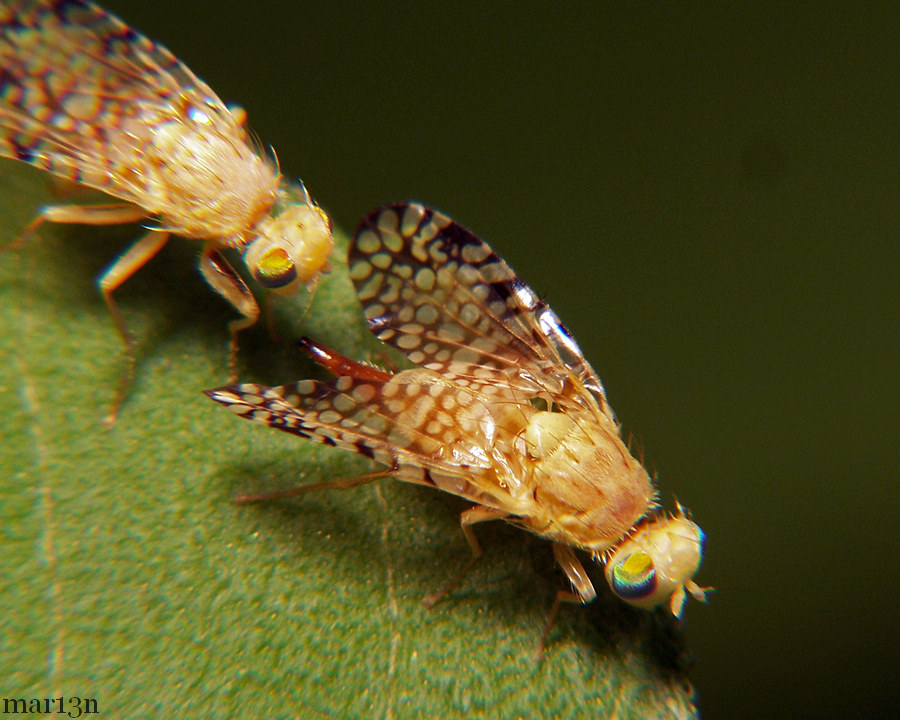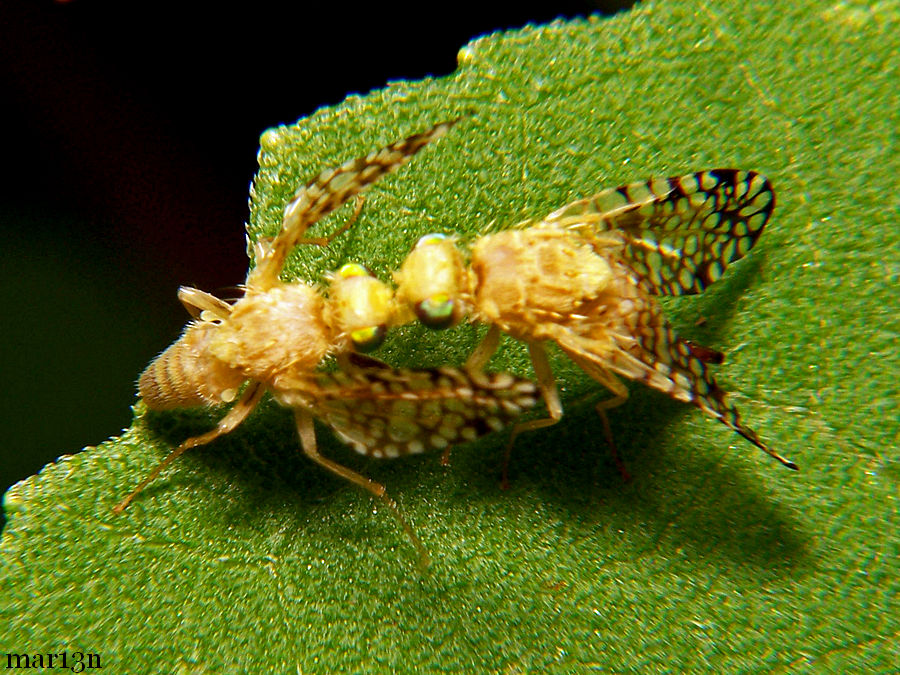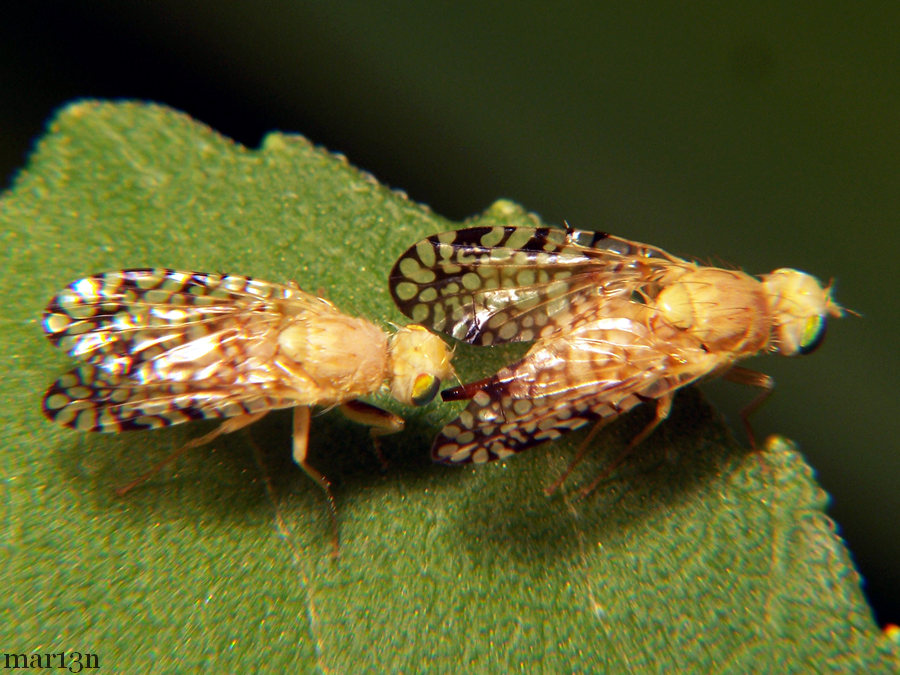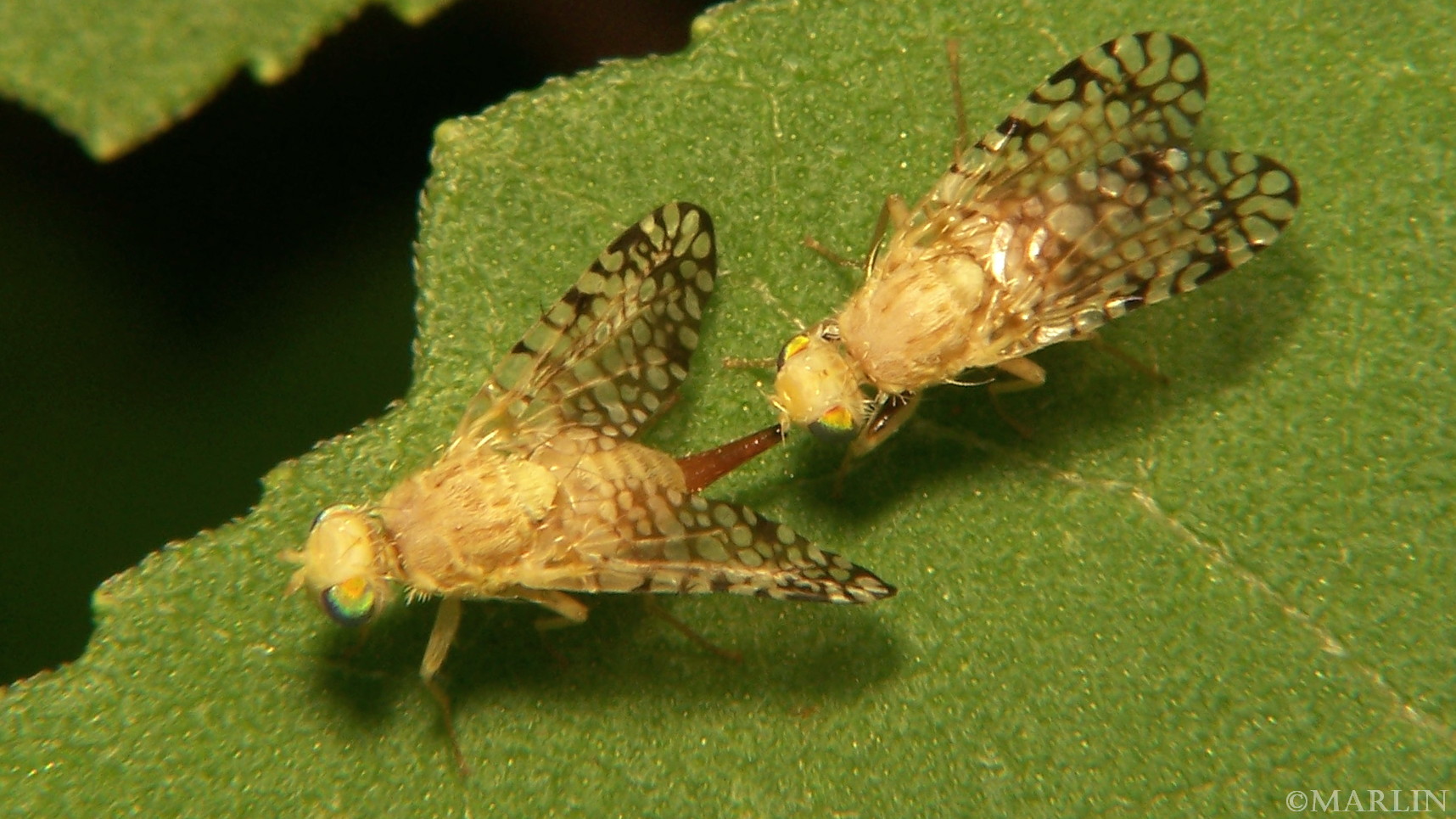Fruit Fly – Euaresta aequalis
I encountered these flies along the shore of a small lake. They were engaged in a courtship ritual – the male was following the female around like a puppy dog – it was comical the way he stuck right on her tail. But every once in awhile, the female would turn around and the male would hold his wings toward her, in a sort of embrace, I imagined, and they would touch head-to-head. Kissing flies. What will they think of next?
Tephritidae is one of two fly families referred to as “fruit flies.” Tephritidae does not include the biological model organisms of the genus Drosophila, which is often called the “common fruit fly”. Drosophila is, instead, the type genus of the second “fruit fly” family, Drosophilidae. There are nearly 5,000 described species of tephritid fruit fly, categorized in almost 500 genera. Description, recategorization, and genetic analysis are constantly changing the taxonomy of this family. To distinguish them from the Drosophilidae, the Tephritidae are sometimes called peacock flies.

Live adult male and female fruit flies photographed at DuPage County, Illinois. Size: 5mm
Tephritid fruit flies are of major importance in agriculture. Some have negative effects, some positive. Various species of fruit fly cause damage to fruit and other plant crops. The genus Bactrocera is of worldwide notoriety for its destructive impact on agriculture. The olive fruit fly (B. oleae), for example, feeds on only one plant: the wild or commercially cultivated olive. It has the capacity to ruin 100% of an olive crop by damaging the fruit. On the other hand, some fruit flies are used as agents of biological control, thereby reducing the populations of pest species.
Their behavioral ecology is of great interest to biologists. Some fruit flies have extensive mating rituals or territorial displays. Many are brightly colored and visually showy. Some fruit flies show Batesian mimicry, bearing the colors and markings of dangerous insects such as wasps because it helps the fruit flies to avoid predators; the flies, of course, lack stingers.
 Mating ritual is common in many fruit fly species
Mating ritual is common in many fruit fly species

Flies of North America – Order Diptera. Flies are prevalent in virtually all habitats, with over 16,000 species in North America. Flies can be distinguished from all other insects in that they only have one pair of normal wings. The other pair has evolved into small ball-like structures called halteres. Most flies have compound eyes and mouthparts adapted for piercing, lapping or sucking fluids.
Flies Index | Tachinidae | Bee Flies | Robber Flies | Crane Flies | Flower Flies

